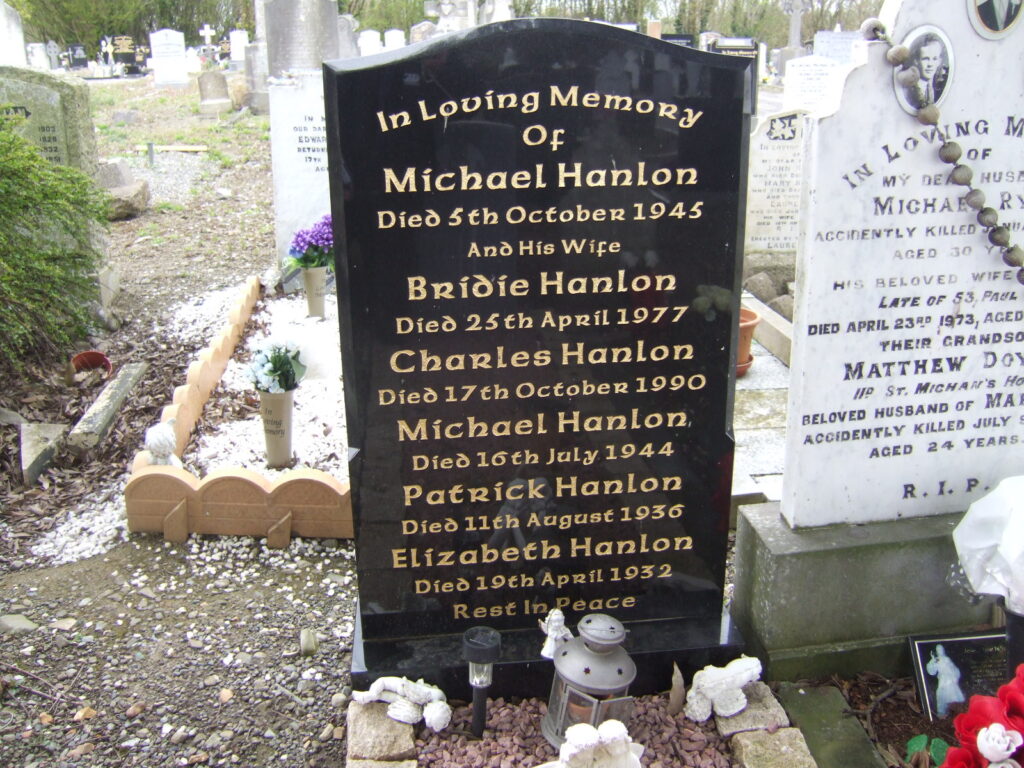The Stakehill Tragedy

When men (and women) transgressed military law in the years around World War 2 through refusal of orders, going absent without leave or maintaining conscientious objection they were sent to one of two institutions, military prisons or detention barracks. One such detention compound was situated between Rochdale and Castleton at Stakehill and had the unenviable reputation of being one of the harshest institutions of its type in the country due to its rigours of hard labour and its tough regime. A number of men were desperate enough to either attempt escape or were successful in escaping detention from there, nine breaking out of Stakehill in one month in 1945.
However, it was an event in the Autumn of that year which hit the national headlines and drew debates in Parliament. A soldier, 32 year old Michael Thomas Hanlon, had been sent to Stakehill for two years detention on three charges of being absent without leave, desertion and making false representations. Hanlon was from Dublin and had enlisted in 1942 and again in the Pioneer Corps in 1943. On October 5th 1945 he was found dead in his cell hanging by the neck with his webbed belt. Although Hanlon was given a Dublin burial, concern was raised about the case and there was a call for an investigation into alleged ill-treatment of him at the barracks.
This was nothing new. Ill treatment had been suggested on a number of previous occasions but the case of Hanlon was brought to the attention of a curate from Castleton – Uriel Evans – along with his vicar, Reverend Burroughs from St Martin’s Church and they were disturbed enough to call for an enquiry following what they felt to be an inadequate inquest by Rochdale’s coroner Mr S Turner. Evans asserted that there was more to Hanlon’s death than met the eye and that he had received a number of letters from the prisoners and ex-prisoners at Stakehill barracks with allegations of rough treatment given to Hanlon and others, saying that they would give evidence in any court of law. In support of this, an inquiry was requested by two Labour MPs, H L Austin the member for Stretford and Tom Driberg, the MP for Malden. The Secretary of State for War promised a full statement after an enquiry, the allegation being that Hanlon had been badly beaten and as a result had died.
The initial inquiry by The Oliver Committee was held at Middleton Magistrate’s Court and heard evidence from Hanlon’s wife that he had been a happy husband and father, adding that he had made no particular complaints about his incarceration. Staff at Stakehill denied any wrong-doing. A pathologist, however, reported marks and bruises on his body and his neck and witnesses at the inquiry said that they had heard shouting and screams as well as threats from the guards the night before Hanlon was found dead. Some reported that Hanlon had told guards to leave him alone, that he felt dizzy and that the guards had said ‘You will be dizzier if I come in there !’ Other witnesses stated that Hanlon had been ‘treated to a beating’ by three cleaners and three guards and that ill-treatment was commonplace at Stakehill. Even with these testimonies, the inquiry concluded that there was insufficient evidence to suggest that brutality had led to Hanlon’s death.

However, by November there was continued public anxiety about what had happened at Stakehill and so a further court of enquiry was set up ‘of a more authoritative character,’ convened under the Army Act and therefore a military inquiry. It was held at Ashton-under-Lyne. Uriel Evans had by this time accumulated nearly 300 letters concerning the conditions at Stakehill and these were sent to the new inquiry. Controversially, the press was not allowed to attend, leading Reverend Evans to comment about the ‘dark and well-veiled secrets of the glasshouse’ and suggesting that restricting public access to the proceedings was undemocratic, the composition of the court being entirely military. The result of the November enquiry maintained that there might have been irregularities of procedure only, and that individuals, not the system, must be held responsible for any shortcomings that may have occurred. The individuals would be reprimanded appropriately. The Rochdale Observer noted in December that Hanlon’s was not the first fatality at Stakehill as 15 months before another soldier had died three days after arriving, collapsing, allegedly during PT exercises.
The case of Michael Hanlon remains shrouded in mystery but the fact that the proceedings of the second inquiry were held in camera and the testimony from many who knew of the cruelty dealt out to inmates was ignored, points to a tragic episode in the history of wartime Rochdale.